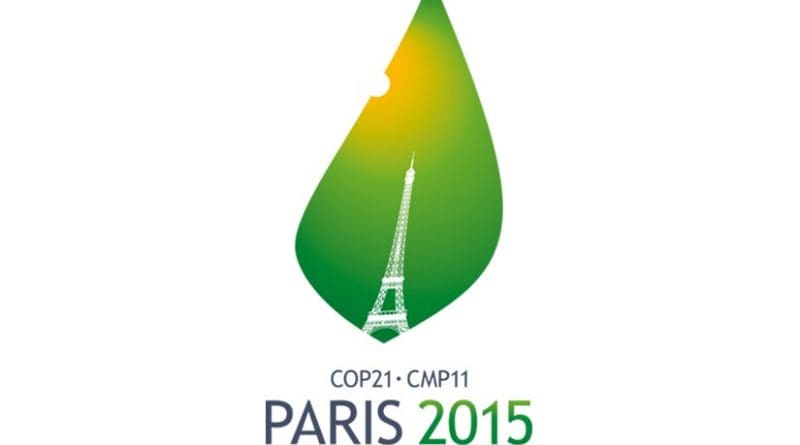COP 21 And The Paris Agreement: Achievement Or Half Measure? – Analysis
By RSIS
The Paris Agreement on Climate Change hailed as the first truly universal and unanimous agreement on climate was celebrated as progress in humanity’s collective fight against climate change. But what did the 195 countries agree on? And does it go far enough?
By Maxim Shrestha*
The 21st United Nations Framework Convention on Climate Change (UNFCCC) Conference of Parties (COP21) in Paris ended on 12 December 2015 by adopting an agreement on climate that was hailed as universal and unanimous. Celebrated as progress in humanity’s collective fight against climate change, the agreement committed the 195 countries signing up to it to limit their collective emissions so that the effects of global warming would not exceed 2 degrees Celsius with a further aspiration to try and keep it within 1.5 degrees above pre-industrial levels.
A lot of attention was on whether the world would finally come to an agreement after many failures in the past, the most notable being in Copenhagen in 2009. There was no guarantee that Paris would be any different. However after multiple revisions and iterations to the core text of the agreement, all the delegations were finally able to find it acceptable.
Notable achievements
Hailed as “historic, durable and ambitious” the Paris Agreement also committed financing of US$100 billion per year (starting in 2020) to be provided to poorer countries (by the developed world) to help them cut their emissions and cope with the impact of extreme weather. There would also be provisions for countries already affected by extreme weather to gain urgent aid. Both these finance mechanisms are to be separate from existing and other forms of non-climate related foreign aid.
Among other notable achievements at COP21, as per the agreement beginning 2020, all countries will be required to regularly report their emissions and progress in nationally determined contributions (NDCs) towards reducing greenhouse gas emissions. Likewise countries will have to reaffirm their NDCs every five years and “represent a progression” from previous commitments. Lastly, it was agreed to take steps towards establishing and promoting carbon trading.
Another prominent feature of the Agreement was in terms of inclusion. It explicitly acknowledged climate change as “a common concern of humankind”, and that all Parties should respect, promote and consider their respective obligations on human rights and other rights as well as “intergenerational equity” when undertaking any form of climate action. Secondly there was also acknowledgement of all stakeholders including non-party actors in mobilising and promoting climate actions, including “civil society, the private sector, financial institutions, cities and other sub national authorities, local communities and indigenous peoples”.
Not far enough
Despite the achievement made in Paris, there are some major concerns. The first and most notable of issues is that the agreement is not technically binding; in other words there is no legal mechanism to ensure that countries adhere to the commitments made. This is both in terms of promised reductions in emissions as well as the annual $100 billion climate funding pledged. Secondly, the sum of all existing NDCs is expected to lead to warming of between 2.7 and 3 degrees Celsius, which is above the 2 degree threshold that scientists predict is the point beyond which catastrophic climate impact will become irreversible.
Many groups, especially in more vulnerable countries, believe that the agreement does not go far enough. From Paris to the Philippines, hundreds of civil society groups, environmental NGOs and ordinary citizens participated in protests and demonstrations highlighting the weakness of the agreement; they maintained that it should have been much bolder and legally enforceable if it were to seriously check the impact of climate change. Many also worry that the promised money, should it materialise, would not be nearly enough to protect the vulnerable populations of poorer countries from climate related disasters like flooding, sea-level rises, drought and heatwaves.
The US$100 billion per annum starting in 2020 as the base to build on was welcomed and appreciated by the developing countries. However it was not made clear where the funds will come from, how much contributions are to be made by the developed versus rich, rapidly industrialising countries, and lastly how the funds will be allocated and distributed. These, arguably the most important details, have been left for future negotiations down the road with no certainty these potentially thorny issues will be unanimously agreed upon when the time comes.
Legacy of Paris
Lastly, concerns have been raised especially in the scientific community that the fact that “commitments” do not start until 2020 has not been highlighted enough. The worry is that should global emissions continue on the current trajectory for the next five years, the 2 degree goal may longer be valid or significant. And the fact that it is non-legally binding also means there are no guarantees that future governments do not renege even on the commitments made in Paris.
Overall, the Paris Agreement produced at COP 21 was a major political and diplomatic success which the negotiators should be proud of. COP 21 will go down in history as the first time the world at least agreed to acknowledge and show some resolve on the issue of climate change. And maybe that in itself is a small victory for mankind.
From an environmental standpoint, however, the Paris Agreement is probably far from being worthy of the self-congratulatory praises and jubilation witnessed.
*Maxim Shrestha is an Associate Research Fellow with the S. Rajaratnam School of International Studies (RSIS), Nanyang Technological University, Singapore.

